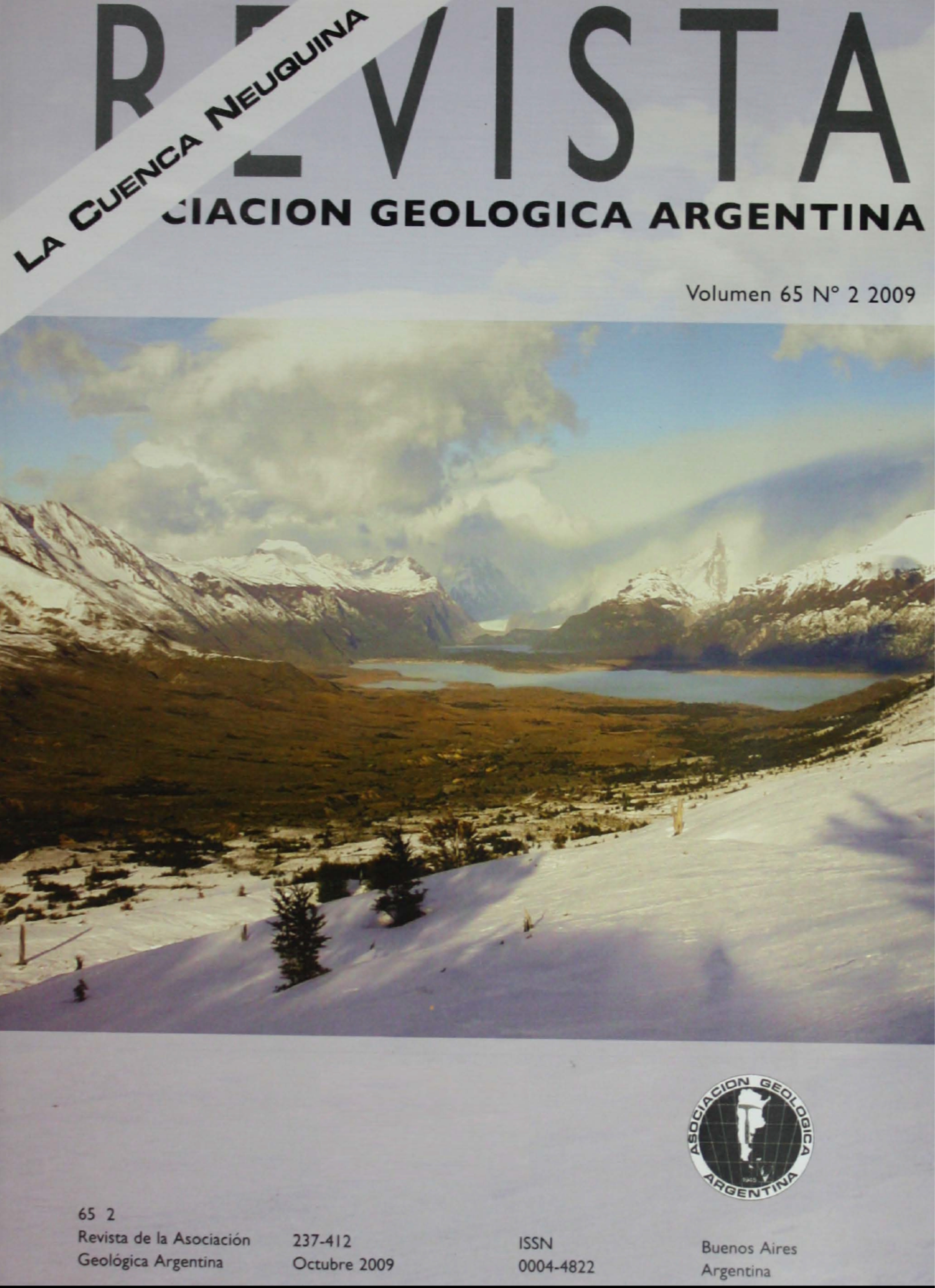Kinematics of the opening of northernsector, Neuquén Basin
Main Article Content
Abstract
The Neuquén Basin is an oil-bearing back-arc extensional basin, formedin the western edge of the Gondwana continent and open to the Pacific at itswestern margin. Its extensional period, from Late Triassic to Early Jurassic,is characterized by the development of several isolated depocenters. Thenorthernmost depocenters correspond to Yeguas Muertas - Nieves Negras, Atuel,Valenciana, Malargüe, Palauco and Cara Cura - Reyes. By integrating previousgeological studies with new structural and stratigraphic studies we presentmodels for the architecture of each depocenter. The extensional structure ofthe Atuel depocenter is characterized by two NNW-trending halfgrabens withbimodal distribution of normal faults inside -NNW and WNW. Kinematic studies ofsmall-scale extensional faults show a NNE to NE maximum stretching direction (?1),suggesting that the Atuel depocenter acted as an oblique rift. The Malargüe andCara Cura - Reyes depocenters present kinematically heterogeneous sets offault-slip data with bimodal pattern of extension axes developed during asingle period of extensional deformation. We evaluated possible causes for thisheterogeneity, such as anisotropy reactivation, triaxial deformation, multipledeformation events, and local perturbation of stress field close to majorfaults, and concluded that these depocenters were opened under a triaxialstrain field. Fault-slip data analyses allow us to derive kinematic informationfor each depocenter, and this is used to achieve dynamic interpretations forthe opening of the basin. Our model suggests a combination of two tectonicevents, regional NNE extension during the fragmentation of the Pangeasupercontinent and NW to W-E extension related to the Pacific and South Americaplate interaction.
Article Details

This work is licensed under a Creative Commons Attribution-NonCommercial 4.0 International License.
Nota de copyright
Los autores conservan los derechos de autor y garantizan a la revista el derecho de ser la primera publicación del trabajo licenciado según una licencia de atribución Creative Commons que permite a otros compartir el trabajo con el reconocimiento de la autoría y de la publicación en la que se publicó por primera vez.
Declaración de privacidad
Los nombres y direcciones de correo electrónico introducidos en esta revista se usarán exclusivamente para los fines declarados por esta revista y no estarán disponibles para ningún otro propósito u otra persona.

